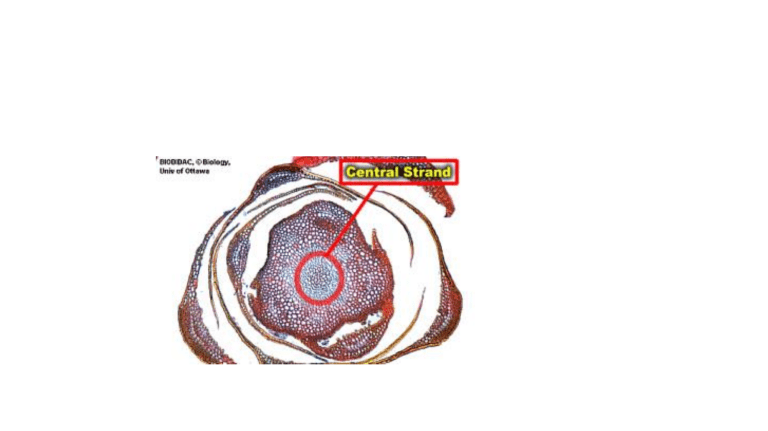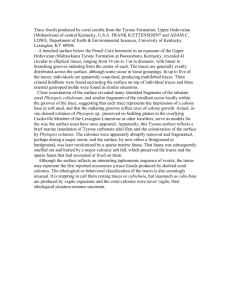Dicot Nodal Anatomy: Unilacunar, Trilacunar, Multilacunar Nodes
advertisement

The Central Strand of this species contains Hydroids that conduct water and Sterids which provide structural support. These Hydroids do NOT have thick cell walls. The Leaf Traces represent branches from the Central Strand that connect with Leaf Nerves. Accordingly the common types of nodes in the dicotyledons are said to be unilacunar with one gap and one trace; trilacunar with three gaps and three traces to a leaf; and multilacunar, with many gaps and traces gaps being also known as lacuna. Anatomists believe that trilacunar condition is more primitive in the dicotyledons and the other two types have evolved either by reduction or amplification in the number of traces (Sinnot, 1934). This assumption has been refuted (Bailey and others) by many workers. In fact volume of recent researches on nodal anatomy (Gunkel & Wetmore, 1946; Marsden & Bailey, ’56 & others) lead to the reputation of Sinnot’s assumption regarding the primitiveness of trilacunar node. Later in the light of above facts it is now interpreted that the evolution of nodal structure proceeded in the following two sequences: (i) Two trace unilacunar gave rise to trilacunar, which terminated in multilacunar condition; (ii) Two-trace unilacunar, by the loss of one trace, gave rise to one trace unilacunar that formed trilacunar node by the addition of two new gaps associated with two traces. The multilacunar condition is derived from the trilacunar type by the addition of more new traces and gaps (Fig.17.5). This evolutionary sequence may be observed in a single family namely Chenopodiaceae. The trilacunar type may also give rise to one trace unilacunar condition. In unilacunar node a leaf has one trace, in trilacunar node three traces diverse to a single leaf and in multilacunar node several traces are present in a single leaf. Usually one gap is associated with one trace but in two-trace unilacunar condition two leaf traces confront to a single gap and in three-trace unilacunar condition three leaf traces are associated to a single gap (Figs. 17.3 & 17.4C). Four main types of dicotyledonous nodes are now recognised. They are: (1) unilacunar two-trace, in which the two traces are connected to opposite halves of the eustele; (2) unilacunar with a single trace, (3) trilacunar with traces from three gaps; and (4) multilacunar, in which more than three traces and three gaps per node are present.


